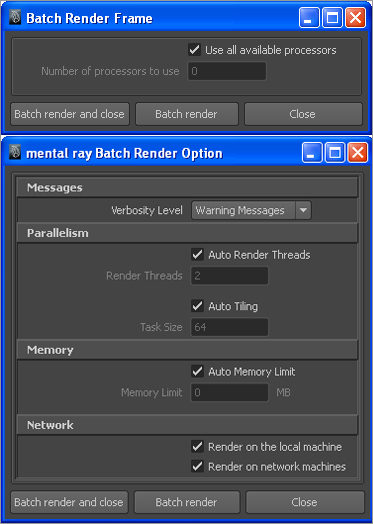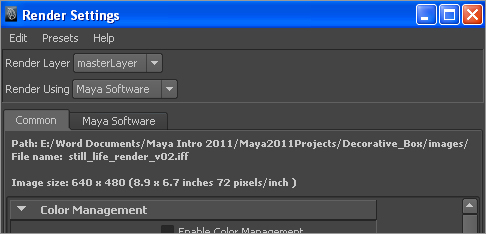So far, you’ve used single-frame rendering numerous times to see a scene in the Render View window. But how do you start rendering an animation sequence to disk? This is called batch rendering in Maya, whichever renderer you use. To batch-render an entire scene, follow these steps:
1. Open the Render Settings window.
2. Choose Maya Software to use to render, enter the start and end frames of your animation, and select your image format. Select your quality and resolution settings. Finally, set the camera you want to render in the Renderable Camera attribute.
Be sure to select name.#.ext in the Frame/Animation Ext drop-down list box to render out a sequence of files. Remember, if you leave the default setting, which is name.ext, only a single frame renders.
3. In the main Maya window under the Rendering menu set, choose Render ⇒ Batch Render ❒ to open the Batch Render Animation dialog box (or the Batch Render Frame box when rendering a single image). Figure 11-25 shows the Maya Software rendering batch options on top, and the image below shows the batch options for mental ray rendering.
4. If you have a multiprocessor, hyper-threading, or dual-core machine, select how many CPUs you would like to use to render your scene.
5. Click Batch Render to render the frame range you specified in the Render Settings window. The render occurs in the background, and you see progress updates in the Command line at the bottom of your Maya screen and in the Script Editor window if you open it.
Figure 11-25: The Batch Render Frame dialog box for Maya Software (above) and mental ray rendering (below)

Figure 11-26: The Render Settings window shows you to where the images will be rendered.

To see a frame as the batch render progresses, choose Render ⇒ Show Batch Render. To cancel a batch render, choose Render ⇒ Cancel Batch Render.
When you batch render, your image files are written to the Images folder of the current project. Make sure your project is properly set; otherwise, your files will end up in an unexpected folder. You can always see the render path and the image name at the top of the Render Settings window, as shown in Figure 11-26.
